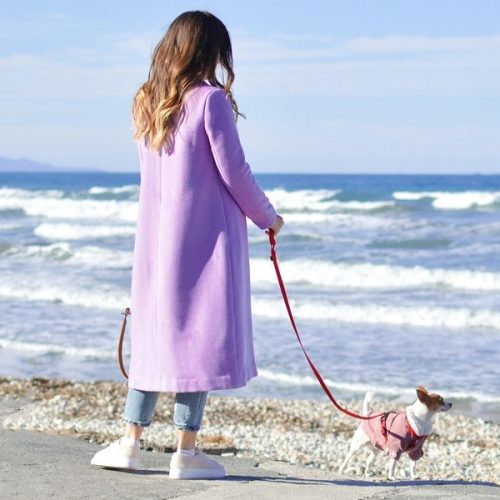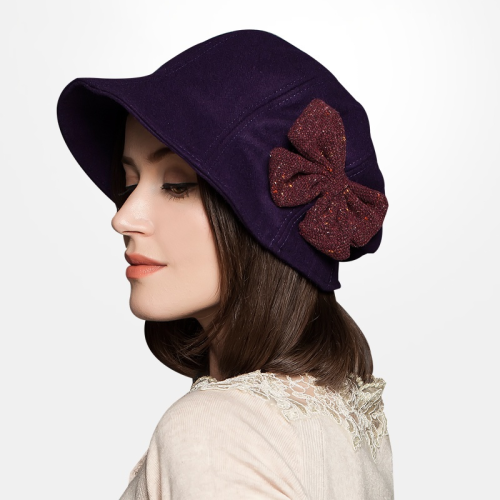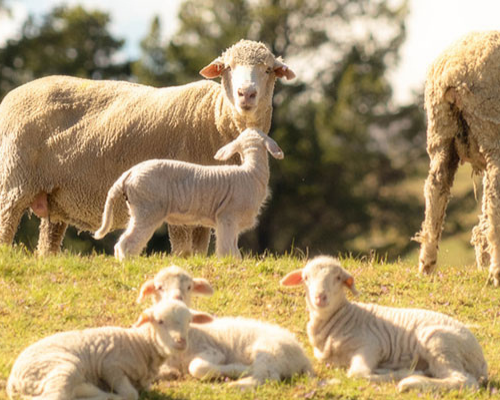First, what are the types of clothing styles
There are 18 specific types, which are:
Ruili, Hip Hop, Wild, Lady, Korean, Ethnic, European, Academic, Commuter, Neutral, Hip Hop, Pastoral, Punk, OL, Lolita, Street, Simplicity, Bohemian.
1. Ruili style: Ruili’s main style is still sweet and elegant.
2. Hippie style: In terms of details, intricate prints, round pockets, delicate waistlines, rough edges, jewelry accessories, etc., will all become the expression of personalized wear; in terms of color, warm colors of red, yellow and orange , cool green and blue will be very hot
3. Versatile style: generally a single product, which can be matched with various clothes, a very practical single piece of clothes, and other styles and colors of clothes can produce certain effects.
4. Ladies style: Natural, fresh, elegant and pleasant is the summary of lady style. Lace and frills are two of the fashion icons of the new feminine style for women.
5. Korean style: Emphasize the impact through the texture and contrast of the fabric, plus a wealth of style changes. The fabric prefers to use very comfortable fabrics such as pure cotton and brocade; it is tailored to the body and has fine workmanship, especially the upper part of the body.
6. National style: Embroidery, blue printing, batik and tie-dyeing are the main techniques. The fabric is generally cotton and linen, and the style has national characteristics, or has national style in details. At present, the popular classic Tang suits, cheongsams, and improved national costumes are the main styles, and of course, national costumes such as Nepal and India are also included.
7. European and American style: Advocating atmosphere, simplicity, natural fabrics, more casual, simple matching sense, strong sense of design.
8. Academic style: simple but rational academic style. Knitted hat, navy blue skirt, striped shirt, white shirt…
9. Commuter style: with a casual style. It is a semi-casual outfit for fashionable white-collar workers. Make the wearer look gentle, close to nature, exquisite workmanship, and strive to create a smart, simple and refreshing image.
10. Neutral style: Neutral clothing belongs to non-mainstream alternative clothing. Gender is no longer all factors considered by designers. Neutral clothing between the two genders has become a unique landscape on the street.
11. Hip Hop Style: Loose tops and pants, hats, headscarves or chubby shoes. It is mainly to wear loose and simple clothes, but there is a strong demand for personal style. Hip-hop’s dressing style is always changing. To look good, simple, and clean, shoes, whether they’re sneakers, work boots, or loafers, have to be clean to show off their texture.
12. Pastoral style: fresh and lively, with the local flavor as the main feature, the style is natural and casual, the color is simple, expressing a relaxed pastoral and otherworldly taste. Pure cotton texture, small checks, uniform stripes, floral patterns, cotton lace, etc. are the most common elements in the pastoral style.
13. Punk style: The main indicators are bright, tattered, simple, and metallic. PUNK is decorated with patterns, common skulls, crowns, English letters, etc., which are often inlaid with shiny rhinestones or sequins. Show off an alternative gorgeous style.
14. OL style: OL is the abbreviation of the English office lady, usually refers to office women, ol fashion generally refers to skirts, very suitable for office wear.
15. Lolita style: wearing a miniskirt, mature makeup, and girlish bangs. But when “Lolita” came to Japan, the Japanese regarded it as a synonym for innocent and cute girls.
16. Street style: Streetwear is generally loose and almost exaggerated T-shirts and pants. Many people like to wrap headscarves. Another typical clothing is basketball uniforms and sneakers, which are also loose-fitting.
17. Simple style: minimalist style clothing has almost no decoration. I believe that minimalist clothing designers are good at subtraction. The silhouette is the first element of the design, taking into account both its own proportions, rhythm and balance, and its harmonious relationship with the ideal image of the human body.
18. Boho: Layers of lace, collarless off-the-shoulder loose tops, large floral prints, handmade lace and knots, leather tassels, beading, wavy hair; its color is achieved using contrasting colors Effects, such as royal blue and golden brown, mid-grey and pink…are unevenly proportioned; the cut has Gothic sophistication, with emphasis on the neckline and waist.
19. Forest style: The color is also dominated by earth and warm colors, as if it was named after walking out of the forest. I like national costumes, I am used to carrying a camera with me, and I advocate an anti-basic lifestyle. Such a fresh atmosphere is unique in Japanese society, and it has set off a trend in Japan.
What is the classification of women’s clothing items Extended reading
For the measurement of clothing, the following should be noted before measuring:
1. The order of measurement is generally: first horizontal and then straight, from top to bottom.
2. The measured person is required to have a natural posture and not to do actions such as straightening his chest, bending over or visiting.
3. Pay attention to the thickness of the clothes worn by the test subjects and the clothing season required by the customer.
4. Pay attention to the tightness of the soft ruler when measuring, cut to maintain the level and be able to rotate.
5. Before measuring the body, attention should be paid to observing whether the body shape of the person being measured is normal, such as encountering abnormal parts (hunchback, chest, convex belly), and after measurement, mark on the record so that it can be adjusted when cutting.
Second, what are the types and styles of women’s clothes
Categorized by combination of wear
There are roughly the following:
1. The whole piece of clothing where the upper and lower parts are connected, such as dresses, etc., are connected to the top and bottoms, and the overall shape of the clothing is strong.
2. The dressing form of the suit top and bottom is separated, there are two-piece sets, three-piece sets, and four-piece sets.
3. The coat is worn on the outermost layer of the clothes, including coats, windbreakers, raincoats, capes, etc.
4. The vest is worn to the upper body of the sleeveless clothing, usually short to the waist, between the hips, for a slightly close-fitting shape.
5. Skirts cover the lower body with clothing, there are more changes such as one-step skirts, A-line skirts, round table skirts, and culottes.
6. Pants From the waist down to the hips, it is divided into the clothing form of the trouser legs, which is convenient to wear and move. There are long pants, shorts, and mid-trousers.
Classification by use:
It is divided into two categories: underwear and outerwear. Underwear is close to the human body, playing the role of body protection, warmth and shaping; Outerwear has different uses due to different places of wear, and there are many varieties and categories. It can also be divided into: social clothing, daily wear, professional clothing, sportswear, indoor clothing, stage clothing, etc.
Clothing fabrics and craft production classification:
Embroidered clothing, woolen clothing, silk clothing cotton clothing, fur clothing, knit clothing, down clothing, etc.
Specific styles include: Ruili, Hippie, Versatile, Lady, Japanese, Korean, Ethnic, European, Academic, Commuter, Neutral, Hip Hop, Pastoral, Punk, OL, Lolita, Street, Minimalist, Bohemian, Simple, Gorgeous, Avant-garde, Loose, Rigorous and other clothing styles.
What is the classification of women’s clothing items Extended reading:
Clothing style refers to the value orientation, intrinsic character and artistic characteristics of an era, a nation, a genre or a person’s clothing in terms of form and content. The realm of clothing design pursuit is in the final analysis the positioning and design of the style, and the clothing style shows the designer’s unique creative thoughts, artistic pursuits, and also reflects the distinctive characteristics of the times.
The objective content reflected in the clothing style mainly includes three aspects, one is the characteristics of the times, social outlook and national traditions: the other is the latest characteristics of materials and technologies and their aesthetic possibilities; The third is the combination of the functionality and artistry of the clothing. Clothing style should reflect the social outlook of the times, under the trend of an era, designers have their own unique creative world, which can cause a prosperous situation of a hundred flowers.
Nowadays, clothing styles are ever-changing, forming many different styles, some have historical origins, some have regional origins, and some have cultural origins, so as to suit different wearing places, different wearing groups, different wearing methods, showing different personality charms.
Third, what are the classifications of women’s tops
Generally, according to the use, it is divided into two categories: underwear and outer tops.
1. Underwear includes undershirts, cotton sweaters (see knitwear) and so on.
2. Outer tops are generally named after styles, uses, craft characteristics, personal names, etc., common suits, student clothes, jackets, dual-purpose shirts, kaqu, hunting clothes, T-shirts, Chinese and Western tops, etc. In addition, sweaters, cotton coats, etc., can be worn internally or externally.




